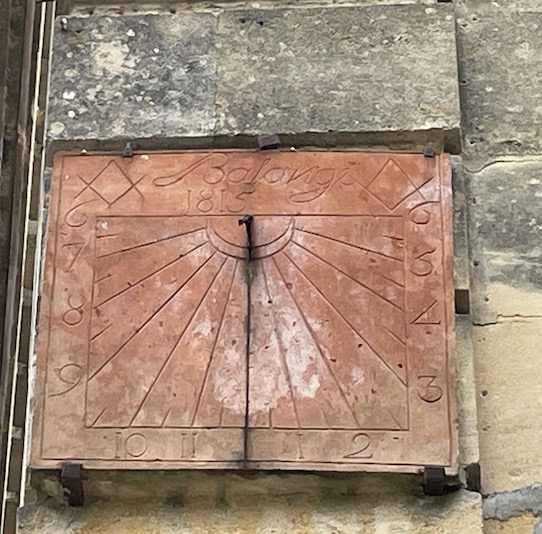Our Blog - Pauillac, France
A little north of Bordeaux, sitting on the left bank of the Gironde estuary, is the town of Pauillac. The population has been fairly steady at between 5000 and 6000 people for quite some time. The town is known for a few things: the vineyards in the area produce red wine and includes a couple wineries that are part of the famous "Rothschild" family, and being the starting point for the voyage of the Marquis de La Fayette to the United States to help with the Revolutionary war.
In 1777, LaFayette sailed from Pauillac to the Americas, to help the American people during the American War of Independence. A bronze stele representing his ship, named La Victoire (translation: the victory), can be found next to the port. When you look at the plaque, you can see his full name: "Marie-Joseph Paul Yves Roch Gilbert du Motier, Marquis de La Fayette". He was very young when we went to join General Washington ... only 19 years old. He went back to France to lobby for more support, reaching Paris in February 1779. Interestingly enough, he was placed under house arrest for 8 days for disobeying the king by going to America. This, however, was merely a public gesture by Louis XVI because soon after, Lafayette was invited to go hunting with the king. When he returned to America in 1780, he was given senior positions in the Continental Army. In 1781, troops under his command in Virginia blocked forces led by Cornwallis until other American and French forces could position themselves for the decisive siege of Yorktown. He returned to France and was a politician for most of the rest of his life, although he spent 5 years in prison after not fully supporting the French Revolution. In 1824, President James Monroe invited him to the US and he visited all 24 states that were part of the US at that time. An interesting piece of trivia: one of his 4 sons was named Georges Washington Louis Gilbert de LaFayette, after General/President George Washington.
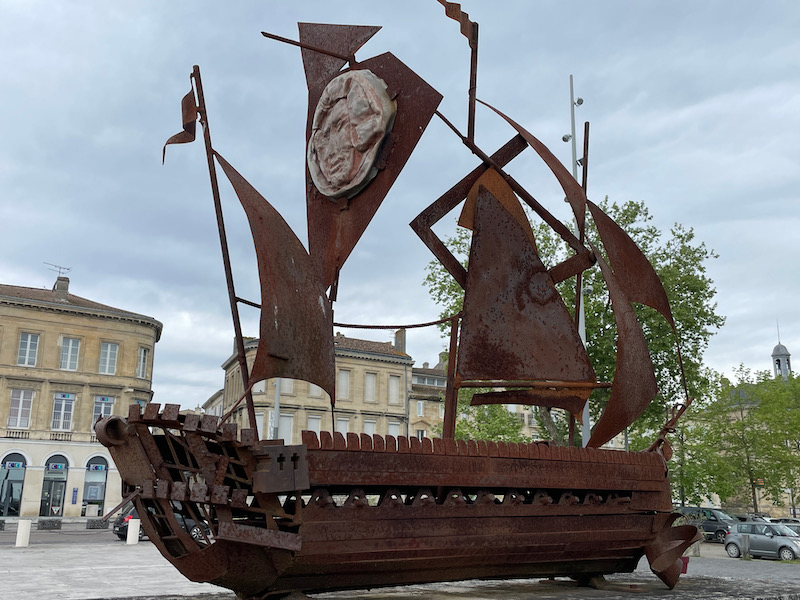
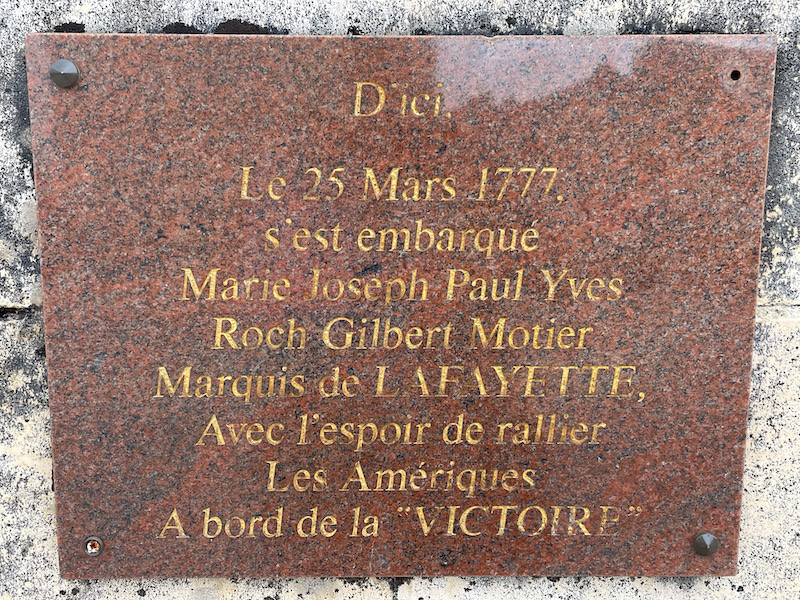
The town council building, built in the 1880’s, is representative of the public architecture from the end of the 19th century. The blazon of the city, with bunches of grapes and a floral decor, sits imposingly on the triangular pediment, which crowns the edifice.
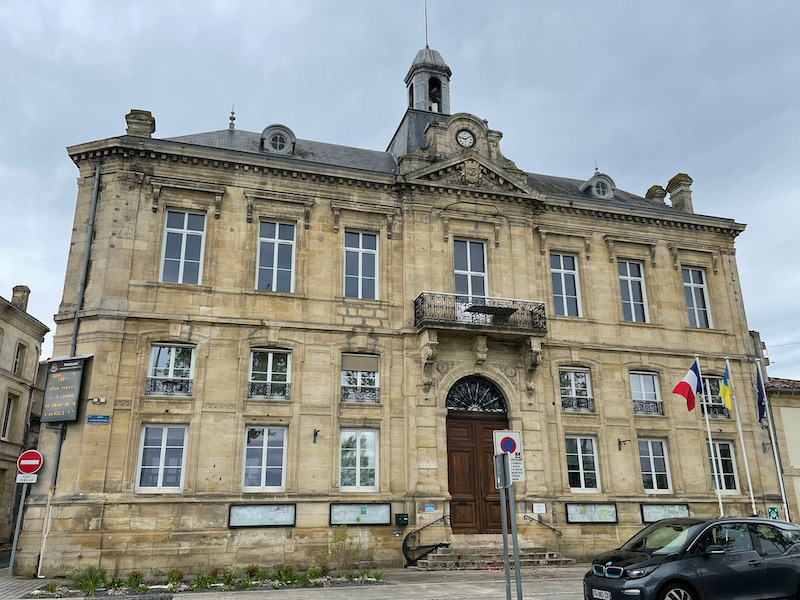
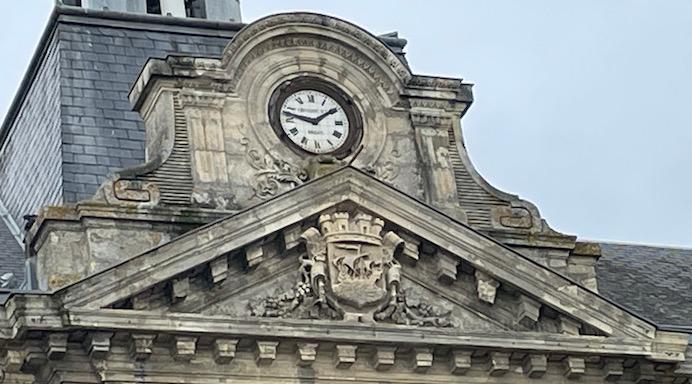
As we walked around, we saw lots of interesting door-knockers and I just grabbed a picture of a couple. The female hand was the most common.
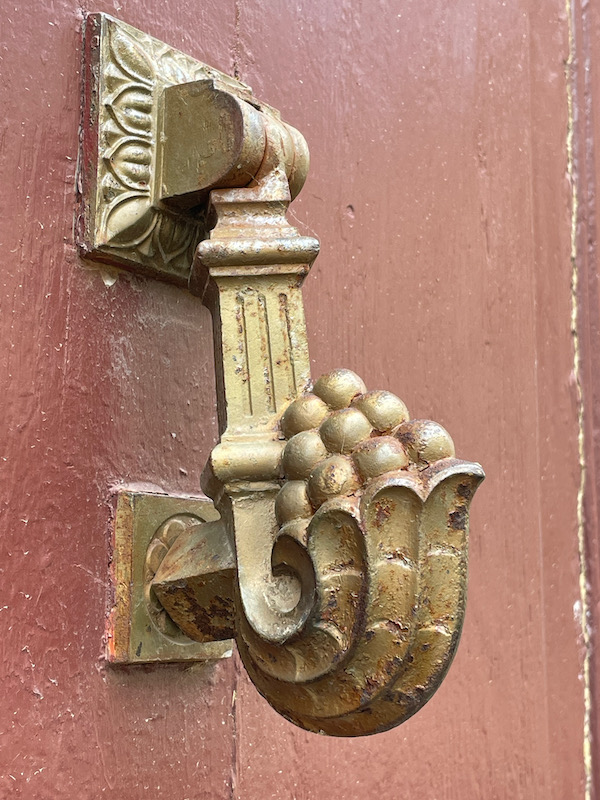
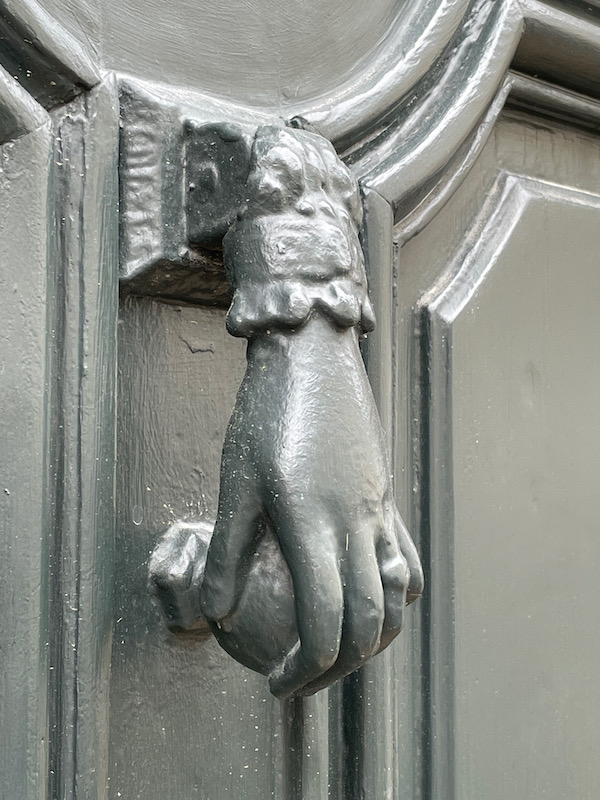
This is the old presbytery, which looks like is getting a full make-over. It is a 2-story building from the end of the 18th century. Semi-circular bays are pierced on the ground floor. There is a pediment in the middle with an oculus (bull's eye) framed by pretty sculptures depicting palms and bunches of grapes.
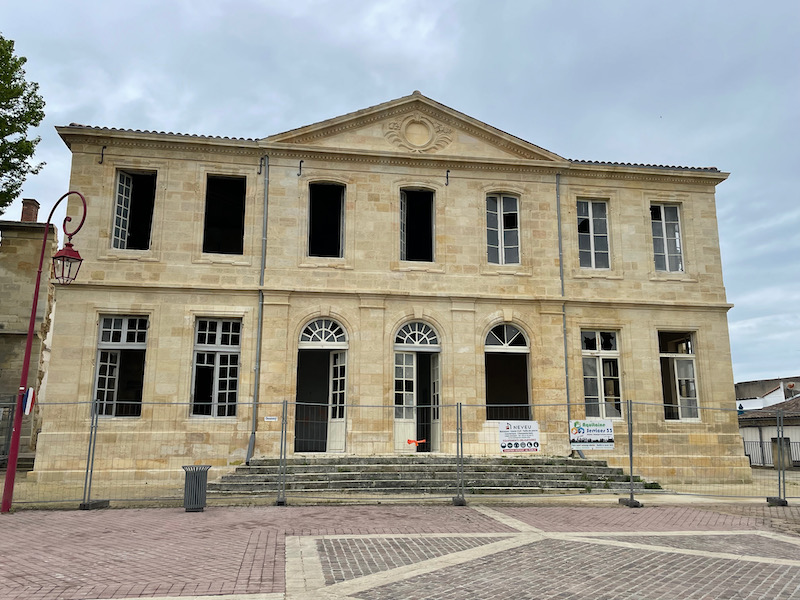
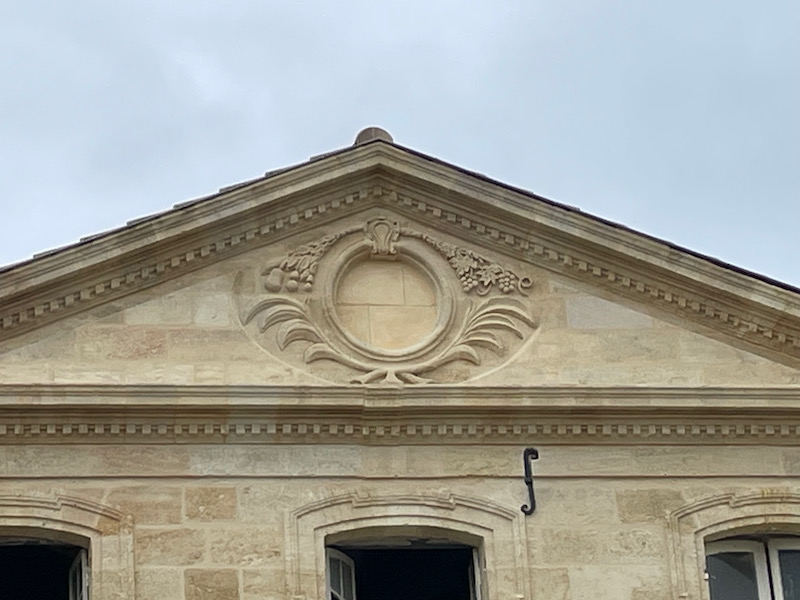
Between 1880 and 1896, long-distance navigation replaced traditional navigation. At the port of Pauillac, wood from the neighboring Landes department and wines from the Médoc region were loaded onto large ships. Tall-masted sailing ships gradually give way to large transatlantic steamer liners. Many shipping companies choose to stop at here, and there were quite a few houses specifically for the ship captains. As you walk around, you can recognize these houses by looking for an anchor sculpted in the keystone above the main entrance.
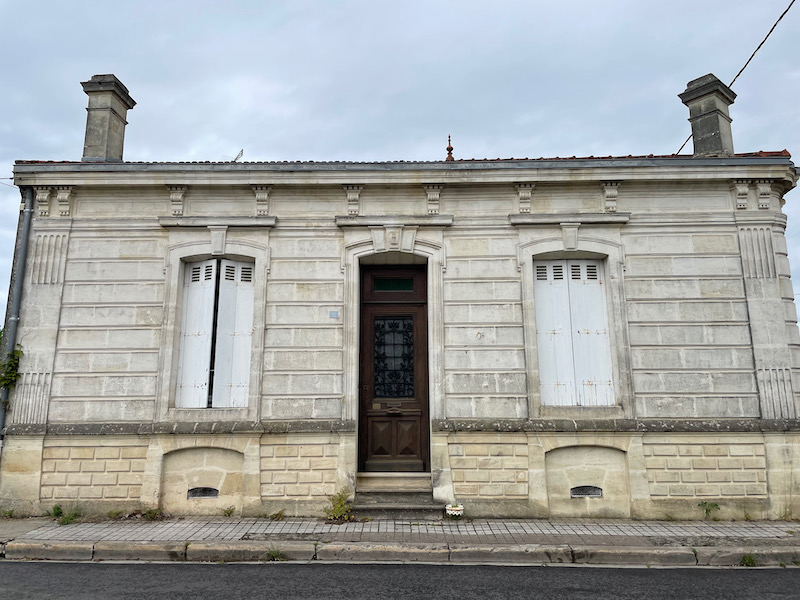
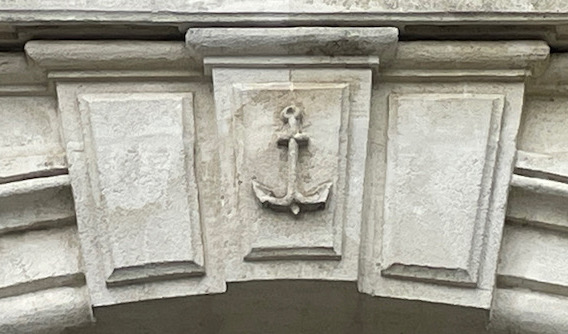
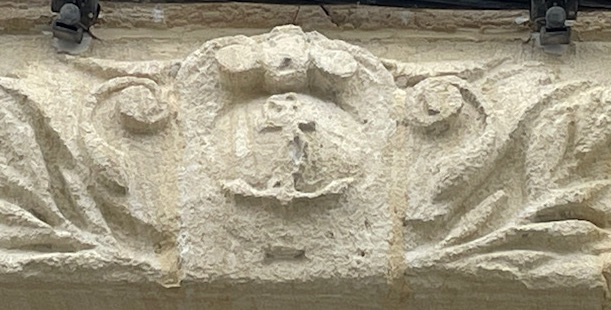
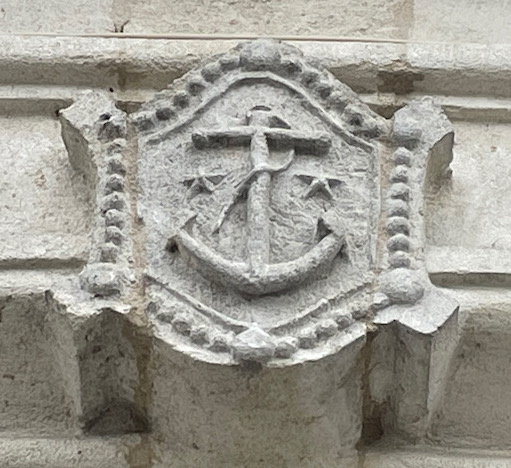
The first service at the Saint-Martin Church was delivered in May 1828 and the church was finished in 1829. The architecture was inspired by Greek Art, which was very popular in the 19th century. The occidental facade is very restrained and overhung by a huge pediment. Unfortunately, it was closed when we were there.
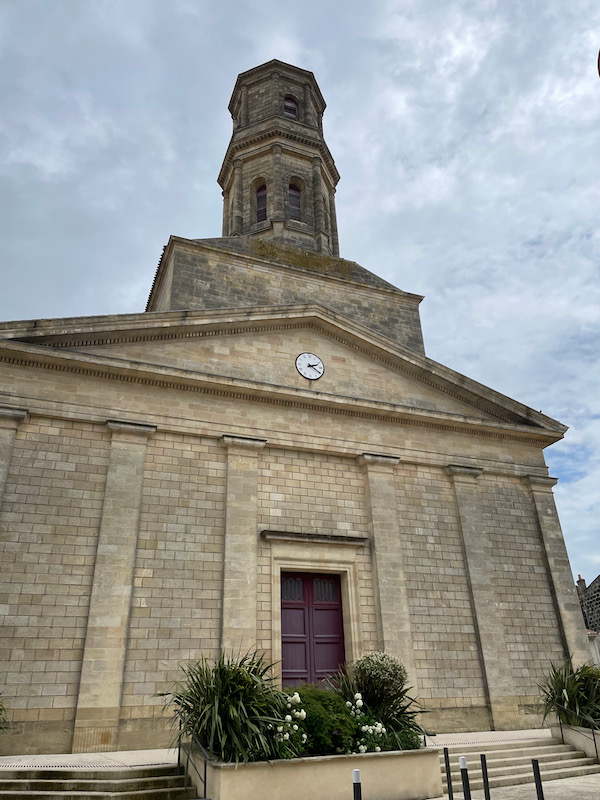
And lastly, an earthenware sundial dating back to 1815.
